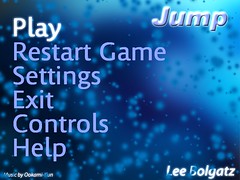2-D Game Development: (8 Videos) Computer Game Design, Video Game Jobs, Game Design Program, Game Development Software, Video Game Programming, and More
 This eight-part video series covers the following topics: Computer Game Design, Video Game Jobs, Game Design Program, Game Development Software, Video Game Programming, and More. Matthew Mead is a computer science instructor at DigiPen Institute of Technology where he teaches courses in programming, data structures, and algorithms. Prior to joining DigiPen, Matthew spent 14 years developing software primarily for the educational software market.
This eight-part video series covers the following topics: Computer Game Design, Video Game Jobs, Game Design Program, Game Development Software, Video Game Programming, and More. Matthew Mead is a computer science instructor at DigiPen Institute of Technology where he teaches courses in programming, data structures, and algorithms. Prior to joining DigiPen, Matthew spent 14 years developing software primarily for the educational software market.
Presenter: Matthew Mead , Computer Science Instructor, DigiPen Institute of Technology
![]() photo credit: shaymus022
photo credit: shaymus022
2-D Game Development
| 1. Overview of Game Development Process |
| Key Concepts:
Learn to write C# the fun way! In this introductory webcast we provide an overview of the topics covered throughout this webcast series. Beginning with an introduction to game programming concepts such as game loops and main game components, we then examine the basic elements of working within the Microsoft Visual C# programming environment. You will also have a chance to catch a glimpse of “Star Trooper” the game project we will build over the course of this series. May 03, 2005 75 minutes |
| 2. Basic Programming Concepts and Introduction to C# |
| Key Concepts:
You have already seen an overview of what will be covered, in this series, during the first webcast. Now we will provide you with a foundation of general programming concepts, as well as focusing on specific programming elements in Microsoft Visual C# Express Edition in the second webcast of this series. Topics being covered include variables, expressions, statements, operators, functions, flow control, classes, arrays, structures and C# types. May 05, 2005 69 minutes |
| 3. Overview of Game Elements |
| Key Concepts:
Building upon the basic programming concepts presented in the previous session, the third webcast in this series focuses on specific game issues including graphics, player input, sound and networking. The discussion covers elements such as 2D/3D graphics, vector versus bitmap graphics, the use of keyboards/mouse/force feedback, audio formats, 3D audio, networking protocols, multiplayer, and peer-to-peer versus client/server networking models. May 10, 2005 78 minutes |
| 4. Introduction to Sprites and Animation |
| Key Concepts:
After briefly touching on graphics in the previous webcast, the fourth webcast in this series will focus on a specific graphical element called “sprites.” Many games utilize sprites for everything from characters to game meters. This portion of the series looks at how the creation and implementation of animated sprites are incorporated into the game project, including background art production, view ports, definition of frames, frame delay, transparency, and alpha-blending. We then apply these concepts to implement the “main” and “enemy” characters of the game project. May 12, 2005 74 minutes |
| 5. Transformation and Collision of Sprites |
| Key Concepts:
Building on the concepts of working with animated sprites introduced in the previous session, this webcast focuses on how to make the sprites move. This webcast looks at topics such as translation, scale, rotation, velocity, and collision, and shows how to use these techniques how to move the “enemy” character in the game project. May 17, 2005 73 minutes |
| 6. Player Control of Sprites |
| Key Concepts:
You learned how to make the sprites move in the previous webcast, this session focuses on how a video game handles player input to create and move a sprite. Learn how to incorporate keyboard input, vector direction, and position into the game project’s implementation of main character and enemy movement as well as “shooting bullets.” May 19, 2005 67 minutes |
| 7. Game Music and Sound Effects |
| Key Concepts:
Audio is unquestionably an important aspect to any video game. This session builds upon the previous webcasts and examines the development issues surrounding the implementation of background music and sound effects that are essential to great video games. In addition to these incidental audio elements, you will learn how to implement the score feature into the game project. May 24, 2005 57 minutes |
| 8. Creating Sprite Behavior |
| Key Concepts:
Continuing the discussion of sprites from the previous sessions, this final webcast in the series goes into more detail regarding sprite behavior and collision detection. Learn how to apply these concepts to the game project’s control of enemy behavior as well as bullet behavior. May 26, 2005 67 minutes |
